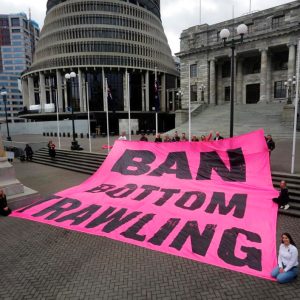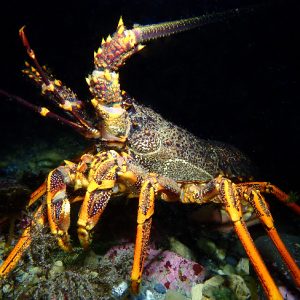There has been widespread discussion about the number of small snapper being caught in close off the northeast coast and whether the new 30cm minimum size limit is good for the fishery. There is some suggestion the size needs to return to 27cm, or have no minimum and land everything. There are downsides to that approach.
The alternative is to find ways to reduce the numbers of under-30cm fish being caught so they can grow and we can enjoy an abundant snapper fishery in the future. LegaSea is keen to support the alternative strategy because there is more yield from harvesting a mature fish with decent sized fillets than killing a juvenile fish. And as the stock rebuilds, we get a more productive fishery and the average fish size increases.
We will never get a high-quality fishery if most small fish do not get the chance to grow.

The good news is it appears the 2007 spawning season was a cracker and that is one of the reasons why there are so many small snapper around this year. This could be Mother Nature’s way of trying to rebuild the stock where we have failed. In a couple of seasons, this year class of snapper will be a better size, though it may take a few years longer for resident fish in the Hauraki Gulf to grow as their growth rate has slowed.
Gut hooking increase
Since last year’s rule changes, there has been an increase in the numbers of gut hooked fish being released. These fish will most likely die. This outcome goes against all notions of conservation and makes us feel bad when we watch these wasted fish floating away or being eaten by birds.
However, this is a consequence of changing the rules without any meaningful educational initiatives involving the recreational sector. As we witness more of this waste over summer there is likely to be a greater call for a process to talk about what we can do to mitigate this waste. It may require consultation by officials on whether we have another rule change that enables recreational fishers to utilise those small, gut hooked fish instead of wasting them.
Signs of a rebuild will be a general size increase in the fish available, but this will take a few years to become evident. In the meantime, we need to fish smarter and promote strategies that will minimise waste.
Conservation through waste reduction
LegaSea encourages the Minister and officials to have a conversation with all fishing interests about strategies that will rebuild the fishery and reduce waste over the next few years.
Success for us is a rapid rebuild of the fishery. To achieve that we need to find ways to fish while avoiding catching the small ones, not rationalising the harvest of small fish because “we can’t help catching them”. The ongoing use of indiscriminate bulk harvesting methods such as trawling inshore, amongst sensitive juvenile habitats and nursery areas, clearly needs to be addressed.
If fishing for snapper recreational fishers can employ best practice techniques, including:
- Using soft baits or jigs that lip hook fish
- When bait fishing, using large baits on large hooks, 7/0 or 8/0s
- Using hooks with a wire appendage designed to reduce the capture and gut hooking of small fish
- Using circle hooks
- Fishing actively, by keeping in touch with your bait or jig to avoid gut hooking
- Moving away from areas holding large numbers of small fish
- Releasing fish in the water or using wet, cool surfaces when handling fish for release
- Using new tools like release weights that quickly return fish to a comfortable depth and help avoid predators
- Quickly killing and chilling in ice or slurry any fish being kept for eating
- Using the FreeFishHeads.co.nz service to share unwanted heads and frames
Why not apply a land-all policy to recreational fishing?
A land-all catch policy is often promoted as a way of reducing recreational fishing activity and related mortality. This is based on the assumption that once the bag limit is caught the person will stop fishing.
There are many reasons why LegaSea does not support a land-all catch policy being applied to recreational fishing, including:
- People would be required to kill fish that they would otherwise have released alive. This would increase fishing mortality and upset conservation minded fishers.
- There is no way to police the land-all catch rule on the water; it relies on voluntary compliance. If a fisher is dissatisfied with the size of the fish on the line then that fish can easily be discarded without detection.
- Some people may keep fishing for other species after their bag limit for a common species is caught.
- A land-all catch policy for recreational fishing could mean no minimum size limit would apply to recreational catch for snapper and other species. Commercial fishers may also expect no minimum size limits to apply to their catch.
Imagine the conflicts if there were no minimum size limits for other species like crayfish or kingfish!
Small fish can suffer fatal injuries if not caught or handled correctly. Small snapper caught in waters less than 25 metres survive well if released correctly.
Avoiding gut hooking is the priority. The solution to the dilemma of fishing in grounds holding high numbers of juveniles is for fishers to either move on or use appropriate angling techniques. No one feels good about juvenile mortality or wasting fish. We need to be sure management changes are reducing this waste, not just legitimising it.
Education, encouragement and peer pressure is the preferred way to change fishing habits and culture.
Why not apply a land-all policy to commercial fishing?
A land-all catch policy is regularly promoted as a means of determining what is actually caught by commercial fishing vessels.
However, applying a land-all policy to discover real at-sea commercial catch is flawed for a variety of reasons, including:
-
- Making land-all catch compulsory does not provide a powerful incentive to avoid catching those fish in the first instance, and may not prevent the discard of uneconomic fish.
- There is the potential to develop new market demand for juvenile fish and species that are currently illegal.
- In reality, the land-all catch policy is directed at trawlers –
- Trawling is the method receiving increasing and intense criticism for its
detrimental effects on the environment. - Trawling was developed in a bygone era, when there was no understanding of the benthic effects or bycatch consequences.
- Trawling is the method receiving increasing and intense criticism for its
Summary
The land-all catch policy fails to achieve its primary purpose – that landed commercial catch will equate to what is actually caught at sea. Compounding on this is the economy created around fish that are needed by the ecosystem, while future yields from the fishery are diminished. Applying a land-all catch policy is a misdirected attempt at curbing the damage inflicted by inshore trawlers.
Solutions
-
- LegaSea promotes moving non-selective fishing methods beyond the 100m-depth contour line because that is considered the limit of small fish vulnerable to trawling and seining.
- LegaSea promotes the need to identify and protect nursery and fragile
areas that are vulnerable to indiscriminate bulk harvesting methods. - LegaSea promotes fisheries management practices that will allow for ‘more
fish in the water’.
For more tips on how to fish smarter visit LegaSea’s FishCare website.





